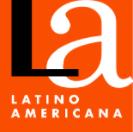“Dust of Time” and imaginary figures in Southern Brazil: challenges in the production of electronic games
Keywords:
digital games, ethnographic narratives, hypermedia ethnography, image, cityAbstract
This article delves in the process of creating the electronic game Dust of Time, figurations of memory in southern Brazil, as part of the research of “Banco de Imagens e Efeitos Visuais” (BIEV/UFRGS) taking into account the challenges of the narration arts of visual anthropology to the production of electronic games. In the production of a hybrid work, we examine the challenge of creating an intertextual dialogue between the narrative genres of the ethnographic documentary, on the one hand, and electronic games, on the other hand. We follow the reflections of Janet Murray [2003] for whom digital games highlight their storytelling potential. It constitutes an invitation to the player / spectator to get to know some of the old legends and stories of Rio Grande do Sul, that survive in popular folklore and oral tradition, woven into the landscapes of the past and the memories of the ancestors.
References
Aaerseth, Espen (2005). “A narrative theory of games”, em: Proceedings of the International Conference on the Foundations of Digital Games, Raleigh, North Carolina — May 29 - June 01, 2012 ACM New York, NY, USA ©2012 pp.129-133.
Bachelard, Gaston (1983). La dialectique de la durée. Paris, PUF.
Barton, Richard F. (1973). Manual de Simulação e Jogo. Petrópolis, Vozes.
Battaiola, A. L. (2000). “Jogos por computador: Histórico, relevância tecnológica e mercadológica, tendências e técnicas de implementação”, Anais do XIX Jornada de Atualização em Informática, p. 83–122.
Beatriz, Isa; Martins, Jodeilson e Alves, Lynn (2009). “Desenvolvimento de Jogos 3D: Concepção, Design e Programação”. VIII Brazilian Symposium on Games and Digital Entertainment. Rio de Janeiro, RJ, Brasil, Outubro, pp. 8-10. Disponível em http://www.comunidadesvirtuais.pro.br/buzios/publicacoes/sbgames2009/nevesmartinsalves.,Acesso 2 outubro 2016.
Benjamin, Walter (1986). Obras escolhidas I, Magia e técnica, arte e política. São Paulo, Ed. Brasiliense.
—(2002). Brinquedos e Jogos, Reflexões sobre o brinquedo, a criança e a educação. São Paulo, Ed. 34.
Berthomieu, B., Diaz, M. (1991) “Modeling and Verification of Time Dependent Systems Using Time Petri Nets, IEEE”, Transactions on Software Engineering, vol. 17, no. 3, pp. 259-273, Mar. https://ieeexplore.ieee.org/document/75415, Acesso 30 setembro 2015.
Caillois, Roger (1992). Les jeux et les hommes, le masque et le vertige. Paris, Gallimard.
Chartier, Roger (1999). A aventura do livro, do leitor ao navegador. São Paulo, UNESP.
Clement, Jean (2015). "Du livre au texte: les implications intellectuelles de l'édition électronique". Sciences et techniques éducatives. Volume 5 - n°4, 1998, Hermès. https://www.persee.fr/doc/sti-ce_1265-1338_1998_num_5_4_1407, Acesso 27 julho.
Costikyan, G. (2002). I have no words and I must Design: Towards a Critical Vocabulary for Games, Proceedings of Computer Games and Digital Cultures Conference. Tampere University Press. http://www.costik.com/nowords2002.pdf, Acesso 12 julho 2015.
Crawford, C. (1982). The Art of Digital Game Design. Washington, Washington State University, Vancouver.
Debray, Régis (1994). L'Œil naïf. Paris, Seuil.
De Certeau, Michel (1984). The Practice of Everyday Life, trans. Steven Rendall, University of California Press, Berkeley.
Durand, Gilbert (1982). Mito, símbolo e mitodologia. Lisboa, Presença.
—(1984). Les structures anthropologiques de l’imaginaire. 10.éd. Paris, Dunod.
—(2000). Introduction à la mythodologie. Mythes et societés. Paris, Le Livre de Poche/Albin Michel.
Eckert, Cornelia e Rocha, Ana Luiza Carvalho d. (2014). Etnografia de rua, estudos de antropologia urbana. Porto Alegre, Ed. UFRGS.
—(2017). Consolidación de dos líneas de investigación em el escenario brasileno: antropoloía urbana y antropologia visual. In: Tocancipa-Falla, Jairo (Compilador). Antropologías em América Latina Prácticas, alcances y retos. Cauca, Editorial Universidad del Cauca. pp. 137-173.
Gomes, J.M.; Velho, L. (1995). Computação Visual: Imagens. Rio de Janeiro, SBM.
Huizinga, Johan (1993). Homo Ludens. São Paulo, Perspectiva.
Hunicke, R., Leblanc, M., & Zubek, R. (2015). “MDA: A formal approach to game design and game research.” AAAI Workshop Technical Report, 2004. WS-04-04, 1-5. Disponível on line: http://www.cs.northwestern. edu/~hunicke/MDA, Acesso 20 julho 2015.
Jencks, Charles (1995). The Architecture of the Jumping Universe a Polemic: How Complexity Science is Changing Architecture and Culture. London, Academy Editions.
Jenks, Henry (2006). Confronting the Challenges of Participatory Culture: Media Education for the 21st Century. Cambridge, MIT Press.
Juul, Jesper (1998). “A Clash Between Game and Narrative”, DAC Conference. Bergen, Norway.
Juul, Jesper (2003). Half-Real: Video Games between Real Rules and Fictional Worlds. Cambridge, The MIT Press.
Kelley, D. (1988). The Art of Reasoning, New York, W. W. Norton.
Kuger, Fernando Luiz e Cruz, Dulce Marcia (2001). “Os Jogos eletrônicos de simulação e a criança”. Trabalho apresentado na INTERCOM – Sociedade Brasileira de Estudos Interdisciplinares da Comunicação XXIV Congresso Brasileiro da Comunicação – Campo Grande /MS – setembro.
Moita, Filomena Ma. G. da S. Cordeiro (2006). “Games: locus de aprendizagens colaborativas e novas sociabilidades”. Em: Lima Jr, Arnaud Soares; Hetkowskim Tânia Maria (Orgs.). Educação e contemporaneidade: desafios para a pesquisa e a pós-graduação. Rio de Janeiro, Quartet, p.217-237.
Murray, J. H. (2003). Hamlet no Holodeck: o futuro da narrativa no ciberespaço. São Paulo, Itaú Cul-tural UNESP.
Piaget, Jean (1978). A Formação do Símbolo na Criança: imitação, jogo e sonho. Rio de Janeiro, Zahar Editores.
Clua, Esteban Gonzales e Bittencourt, João Ricardo (2005). Desenvolvimento de Jogos 3D: Concepção, Design e Programação. Anais da XXIV Jornada de Atualização em Informática do Congresso da Sociedade Brasileira de Computação, pp. 1313-1356, São Leopoldo: Brazil, Julho de. Disponível em: http://www2.ic.uff.br/~esteban/files/Desenvolvimento%20de%20jogos%203D.pdf Acesso 20 maio 2015.
Pinheiro, Cristiano Max Pereira (2007). Apontamentos para uma aproximação entre jogos digitais e comunicação. Tes e (Doutorado em Comunicação Social) - Programa de Pós-Graduação em Comunicação - Pontifícia Universidade Católica do Rio Grande do Sul, Porto Alegre.
Rappoport, A., Chammah, A.M. (1965). Prisioner’s dilemma: a study in conflict and cooperation. Michigan, University of Michigan Press.
Ricoeur, Paul (1994). Tempo e Narrativa. Campinas, Papirus.Rocha, Ana Luiza Carvalho da e Eckert, Cornelia A Preeminência da imagem nos jogos da memória coletiva em coleções etnográficas. Brasília, Editora Associação Brasileira de Antropologia, 2015.
—Etnografia da Duração: estudo das memórias coletivas em coleções etnográficas. Porto Alegre, Marcavisual, 2013.
Schell, J. (2008). The art of game design: A book of lenses. San Francisco, Morgan Kaufmann.
Schuytema, P. (2008). Design de games: uma abordagem prática. São Paulo, Cengage Learning.
Sousa, Jessé e Öelze, Berthold (1998). Simmel e a modernidade. Brasília, UnB. pp. 137-144.
Wittgenstein, Ludwig (1975). Investigações filosóficas. São Paulo, Abril Cultural.
























